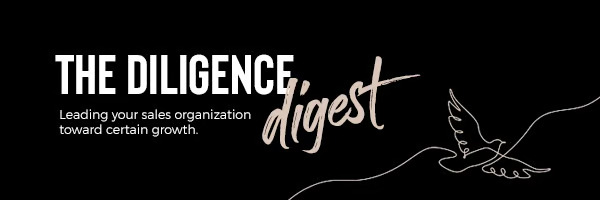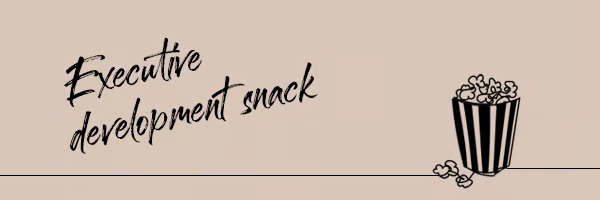
March 2024, Vol 4
Time Investment: 3-5 Minutes
THE BOTTOM LINE
There’s a story behind the statistics of the ever-expanding sales training industry.
The sales training marketplace is conservatively valued at over $9 billion. As a category, analysts see it growing annually by 7.5% through 2030. It’s a staggering figure and it’s been that way for decades. While many training providers will emphasize stats that show the performance gains made possible by investing in their learning products or platforms, the reality on the ground isn’t that cut and dry for most sales organizations.
Only 17% of companies say that they have an effective sales training program. Over a quarter of sales reps admit that the courses they’ve taken had little to no benefits on their productivity. Even when the best sales training is offered, it’s widely known that 84% of knowledge is forgotten within three months without reinforcement. That scenario is playing out every day in companies across the US. It’s far too common to have zero consequences for not applying knowledge after taking a training class. So, this constant knowledge leak is killing the majority of investment dollars made in training.
Still, training is a comfortable catch-all for most sales leaders. See salespeople struggling? Let’s get them trained. However, the process of building or buying, and implementing training is arduous, costly, and time-consuming. The consequence of this heavy lift is that training is deployed in a linear way. Performance problem + training class + repeat. In Netflix terms, think single episode versus a full season or series.
This episode-by-episode, tactical approach may impart knowledge, but it rarely changes behavior. So, when nagging performance issues linger, leaders feel pressure to spend more money on a different offering – this is the story behind the statistics and why this industry keeps mushrooming. It’s not because it works, it’s because there are so few alternative options that are familiar and comfortable.
The way to break this cycle is to pivot towards building capability. This strategic approach is tailor-made to drive behavior change. It addresses performance needs with a full season rather than a single episode. It emphasizes context and continuity over the traditional obsession with content. While this discipline may be less familiar today, it will become table stakes for businesses that need a competitive edge to grow revenue in an AI-driven sales environment. While AI is advancing exponentially, consider getting comfortable now with the paradigm shift towards capability building so that your organization is fully calibrated to generate revenue.

Free Content: Executive Briefing on Training v. Capability
This month’s premium resource is a one-page visual and 5-minute walkthrough for sales leaders on the difference between training and building capability. This briefing will equip you to start internal conversations about how to shift some of the emphasis away from single training episodes to a capability-driven series that better aligns with growing revenue. Access here.

Develop Yourself As a Sales Leader
Intro: If you want to motivate the leaders on your team to move the sales organization from a tactical to a strategic development focus, then create a shared experience for you and them.
Actionable Idea: Choose two specific topics that you’ve been meaning to become conversationally intelligent about. One idea might be ‘communicating with brevity.’ Over the next week:
Topic 1: Spend 20 minutes in one sitting learning new information about the first topic. (Episode approach)
Topic 2: Then, on a different day, spend 20 minutes in one sitting on the next topic, but don’t stop there. Over the next 5 days, devote just 5-10 minutes to exploring the topic further. (Series approach)
Ask: What conclusions can I draw from this experiment on learning episodes versus a series approach? Write down your thoughts and share them with your enablement or training team members. Ask them to try this exercise and share the results with you. Use this personal experience as a springboard for transformative conversations about developing salespeople.

A Little Piece of My Mind...
In The Diligence Fix, I dedicated a chapter to the topic of development. After years of consulting on behalf of several top sales training companies, I enjoyed analogizing the role that most external providers play to that of an A-list entertainer. You know, someone that you’d give up a Saturday night to see with friends. Here’s a complimentary excerpt of chapter 14 so that you can read it for yourself.
I see the value of training as a portion of the development equation. However, it’s expensive to produce and the outcomes are short-term at best and suspect at worst. Think about your experiences scrolling through Linkedin. You’ll see salespeople in your network celebrating certificates and credentials, and yet when it’s go-time with a buyer, chances are you’ve observed how many lack the instincts or discipline to drive the sales process.
What you really want are sellers to show up like you would. Well, we both know that you didn’t get to where you are in your career because of a training program. Sure there may have been one or two that helped, but it was you who did the work to contextualize your experiences and practice the right behaviors consistently during your climb to the top, true?
Here’s one more analogy. Health and wellness practitioners will often talk about the limitations of Western medicine. It tends to focus on symptoms rather than the whole person. Training versus capability building isn’t all that different from Western versus holistic medicine. Here’s to perfecting the right mix for your organization!
I am rooting for you!
PS: What’s on your mind? Send me a note at: dayna@thediligencefix.com